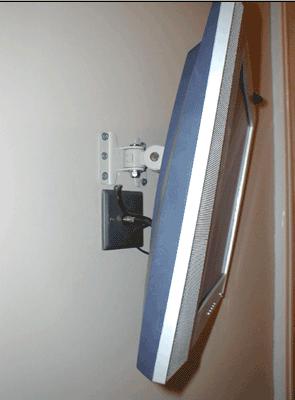One molecule of this gas, Nitrogen trifluoride, is weighed in the greenhouse effect to 17 thousand molecules of carbon dioxide

In Argentina, hundreds watched the glacier break and collapse, millions of others could see the spectacle at a special site set up for the event. A glacier with an area of about 16000 square kilometers broke off and disintegrated from the frozen Antarctica. These and many other events demonstrate and emphasize global warming.
We all (almost) know that a large part of human warming is the emission of greenhouse gases by industries, power plants, vehicles, agricultural fields and farm animals. All of these cause warming, now another greenhouse gas has been "discovered", a gas that is used in the production of television screens with a "liquid crystal display" (LCD). The gas, nitrogen trifluoride, is a greenhouse gas whose effect on warming is 17,000 times greater than the effect of -carbon monoxide The growing use of nitrate doubles every year and reaches (this year) 8,000 tons, comparing the effect of nitrate on warming to coal-fired power plants.
The alarm bells are ringing following a study published in the journal Geophysical Research Letters. One of the authors of the study, Michael Partner explains that the properties of the gas have been known for a long time, but they were not given importance since its amount in the atmosphere was minimal, but the growing demand for LCD screens. results in the emission of ever-increasing amounts of nitrate, so much so that the researchers estimate that next year the nitrate "contribution" to warming will be equal to the effect of the greenhouse gases emitted by Austria.
In the Kyoto Convention there is a reference to six greenhouse gases. Nitrate is not one of them, again due to the unimportance and tiny amount of the gas - at the time the treaty was drafted. The change in the emission amounts due to the transition to digital television - flat screen, including LCD, a transition that is manifested in increasing demand mainly in the USA. Until today, LCD screens were considered Environmentally friendly because of their relative frugality in electricity consumption, now we need to stop, think and refine their "contribution" again.

8 תגובות
Switch to OLED..
It is all-consuming and economical.
So maybe Austria should produce less greenhouse gases and then there will also be less of this stuff.
I saw it on my LCD screen. (In Argentina, hundreds watched the glacier break and collapse, millions of others could see the spectacle on a special website set up for the event)
To provide
Austria is a country of about eighty thousand square kilometers and a population of about eight million. True, compared to Israel it is 4 times larger in area, but in global terms it is considered a small country. In any case, I do not underestimate it. Regarding the production process of the LCD compared to other screens, I really don't know what the nature of the production process is, except that it is not the main thing. The main thing is that the developments in this area are fast and it is possible that what was said about the LCD screens will not be relevant for the future, even the near one.
to Yoram
Austria is not such a small country, Nomi told you that the production process is different in the new screens compared to the LCD
I do not underestimate the new discovery. It should definitely be taken seriously. At the same time, the following points should be taken into account:
1. With all due respect, the effect of nitrate is predicted to be the size of the effect of the amount of greenhouse gases that an Austrian emits. This is important, but there is nothing dramatic about it because it must be assumed that Austria's contribution to the emission of greenhouse gases is quite small, since Austria is a small country.
2. It is assumed that in the coming years, other types of flat screens will come into use, including the OLED screen, which is close to the day when it will be used in TV and computer screens. Therefore, looking at the LCD screen is somewhat misleading, when looking at the range of the next few years.
The question is, is the gas emitted from the screen or during its production process? If it is a production process, then there is no problem to capture this gas (which will of course be expressed in the process of increasing the prices of these screens). But if it is a natural emission of the gas from such screens in a natural and continuous manner at home or in the office, then there is a real problem here that must be addressed and alternatives found as soon as possible.
In short, there is no miracle solution